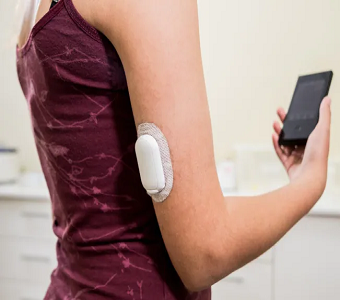- Eli Lilly and Novo Nordisk have established a stronghold in the $50B+ obesity opportunity.
- Validated approaches include GLP-1 & GIP/GLP-1. Although there are other targets that have shown promising early data.
- Smaller innovators will need a strong competitive advantage to overcome big pharma’s dominance in the obesity market.
Lilly shares have shot up in 2023, fueled by strong Mounjaro sales and positive donanemab data. Lilly’s market cap of $410B is almost on par with long-time healthcare market leader Johnson & Johnson (JNJ) at $418B. Novo Nordisk, the other big player in obesity, has also seen share performance rally, reflecting the performance and expectations of their obesity drug franchises.

Morgan Stanley predicts that the obesity market is going to be a $50B opportunity by 2030, a large enough figure that has caught the attention of big pharma. As a result, obesity has become a crowded space with nearly all big pharma players testing different approaches.
The most common late-stage assets & approaches:
- GLP-1 led by Wegovy (NovoNordisk)
- GIP/GLP-1 led by Mounjaro (EliLilly)
- Amylin analog/GLP-1 led by CagriSema (NovoNordisk)
- GLP-1/glucagon led by BI-456906 (Boehringer Ingelheim)

Novo & Lilly Establishing Leadership Position
As it stands, only Wegovy (semaglutide) is currently approved for obesity. Lilly’s Mounjaro (tirzepatide) is expected to receive obesity approval late 2023-early 2024 as the FDA has granted Fast Track designation. The long-term weight loss results seen by Mounjaro and Wegovy stand out in the obesity market and have created the benchmark for challengers.

GLP-1 and GIP drug classes are shaping up to be the foundation of obesity treatments
Glucaon-like peptide-1 (GLP-1) agonists stimulate the production of incretin, a naturally occurring hormone that helps people feel full longer by slowing the rate the stomach empties and a part of the brain that control hunger signals. Gastric inhibitory peptide (GIP) acts similarly to GLP-1 by also stimulating incretin.
GLP-1 with First Mover Advantage
Novo’s Wegovy, a weekly sub-cutaneous injector, is the current market leader for GLP-1 agonists. Novo is also testing a daily oral semaglutide in Phase 3. Semaglutide is the same compound used in Wegovy. Pfizer’s danuglipron is a twice-daily oral GLP-1 in ongoing Phase 2 trials, and PF-07081532, a once daily oral GLP-1 in Phase 2. Pfizer plans to advance one of the two candidates to Phase 3, based on efficacy, tolerability and dosing. In the preclinical area, Terns Pharma (TERN) has an oral GLP-1 agonist called TERN-601 with plans to initiate Phase 1 in 2H 2023.
GIP/ GLP-1
Eli Lilly’s Mounjaro, a weekly sub-cutaneous injector, is the current market leader for GIP/GLP-1 agonists. Mounjaro stimulated both GIP and GLP-1 receptors, while Wegovy acts only on GLP-1 receptors. So far, Mounjaro has reported better efficacy & safety.
Challengers include Amgen’s AMG-133 and Viking (VKTX) VK2735. AMG-133 is a monthly sub-cutaneous injector, in Phase 2 studies. In Phase 1, AMG-133 showed a 14.5% reduction in body weight after 12 weeks.

Mounjaro and Viking’s therapies are GIP/GLP-1 co-agonists, whereas AMG-133 stimulates GLP-1 and blocks the GIP receptor. This approach by Amgen is novel and there will be questions around how inhibiting GIP might affect blood sugar levels of diabetic patients. GIP agonists are useful in treating diabetes because they stimulate insulin production and increase insulin sensitivity. Therefore, blocking GIP might risk making diabetes worse and many obese patients also have diabetes. AMG-133 Phase 1 did not enroll diabetics, while the ongoing Phase 2 will. It will be interesting to see how diabetic patients respond to AMG-133.
VK2735 is expected to be a weekly sub-cutaneous injection that demonstrated a 7.8% reduction in body weight after 4 weeks. Viking is also testing a daily oral version of the drug.

Other less validated approaches
Amylin analog/GLP-1
Novo is developing a fixed dose combination of CagriSema, a once-weekly subcutaneous combination of semaglutide and a novel amylin analogue, cagrilintide. In Phase 2 overweight patients with diabetes, CagriSema achieved a body weight reduction of 15.6% after 32 weeks. CagriSema is currently in Phase 3 for obesity in a trial called REDEFINE3 where Novo expects 13-15% weight reduction in diabetic patients and 20% weight loss in non-diabetes obesity.
If actually achieved, this would put CagriSema’s results in line with leading Mounjaro and Wegovy and give Novo another hit in the obesity treatment.
Glucagon & GLP-1
Boehringer Ingelheim’s glucagon/GLP-1 agonist, BI456906, achieved up to 14.9% weight loss after 46 weeks in patients with obesity or overweight without diabetes. At 4 weeks and 12 weeks, BI456906 had reported 4.5% and 11% weight reductions, respectively, a sign of an effective mechanism of action for the weekly sub-cutaneous injection.
However, the same glucagon/GLP-1 agonist class also took a hit after Altimmune (ALT) reported data that did not compare favorably to the market leaders. The 24-week analysis of the 160 participants in the phase 2 MOMENTUM trial showed mean weight loss of 10.7% for individuals taking the highest 2.4 mg dose. Shares of ALT were down over 50% on Phase 2 interim, showing the high benchmark that has been established for challengers in the obesity market.

ActRII Blocking Antibody
Versanis’ (private) bimgrumab is a monoclonal antibody to activin type II receptors that blocks binding of ligands including myostatin, activins and GDF11. Unlike the other obesity treatments, bimagrumab decreases body fat, while at the same time increasing muscle mass. In a Phase 2 trial, after 48 weeks of once-a-month IV treatment with bimagrumab, the top dose group lost 21% of total body fat mass and gained 3.6% of muscle mass.
Bimagrumab will enter a Phase 2b study in non-diabetic patients with obesity to evaluate its safety and efficacy both as a monotherapy and when co-administered with semaglutide. This would be the first combination therapy trying GLP-1 with an antibody.
Bottom Line: Current competitors are years behind the two market leaders. Any challengers to Wegovy or Mounjaro will either need to provide convenience dosing (oral or monthly injections), superior weight loss or a better safety profile. Amgen’s AMG-133 could have an advantage due to monthly dosing, followed by a potentially quarterly maintenance. Versanis’ bimagrumab also provides the muscle gain and potential to be used in combination. The other “me-too” GLP-1 or GIP agonists face a greater challenge due to slight incremental weight loss, if any at all.
Is Obesity Going to Follow PD-1 Landscape?
Since the first approvals in 2014, the PD-1/PD-L1 market in solid tumors has been dominated by early entrants Keytruda and Opdivo. In 2021, Keytruda had 54% of the market share and the top 3 brands held 91%.

Dethroning Established Leader is No Easy Task
To escape Keytruda’s dominance, late-commers have been forced into smaller segments such as sub-populations or combination partners. One of the main reasons for this is due to the small incremental benefit that each challenger provides, which is not enough to oust Keytruda.
The longer Keytruda stays on top, the higher the evidence bar that innovators will need to clear for regulatory and commercial success. Regulators, consumers, and investors will demand head-to-head comparisons vs the latest standard of care which sets a high bar, drives up costs and increases development risk.
We think a similar trend will happen in obesity. The market has established Wegovy and Mounjaro as the benchmark, and approaches that come up short are written off. See Altimmune example above.
In an increasingly competitive market, obesity innovators will need to differentiate their approach to compete against Wegovy and Mounjaro.
Competitive advantage will come in forms of:
1. Clear efficacy improvement: 15% body weight reduction after one year is becoming the benchmark for obesity. Companies on track for this 15% reduction are rewarded. See VKTX after VK2735 4-week data showed 7.8% weight loss reduction.
2. Fewer adverse events: primarily gastrointestinal (nausea, diarrhea, and constipation).
3. New targets & mechanisms: Versanis’ bimagrumab antibody approach has potential to increase lean muscle mass while lowering fat. Also, amylin/GLP-1 might be a third pillar of obesity, depending on the results of CagriSema’s Phase 3. The jury is still out on glucagon & GLP-1 after ALT’s failure and Boehringer’s BI456906 positive interim data at 46 weeks.
4. Convenience: there is high interest in orals over the current sub-cutaneous injectables. Novo is testing a daily oral semaglutide, the same compound used in Wegovy, in Phase 3. Pfizer is testing two oral compounds in Phase 2, danuglipron as a twice-daily and PF-07081532 as a once daily. Amgen’s AMG-133 is being tested as a monthly sub-cutaenous injection.
Access This Content Now
Sign Up Now!




